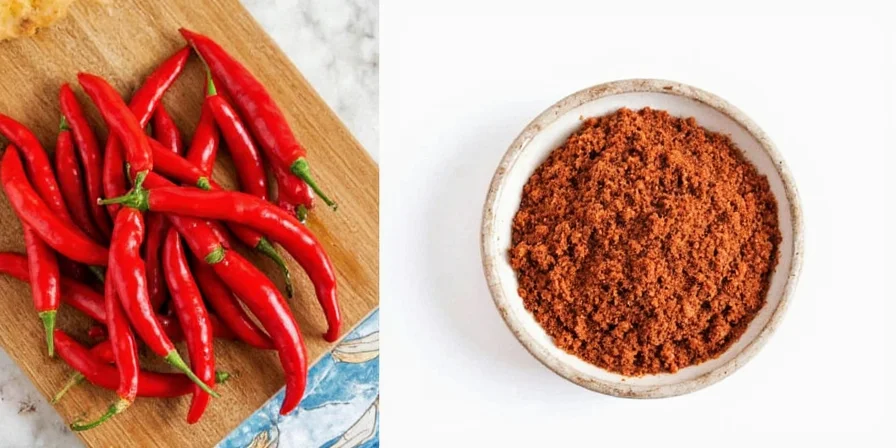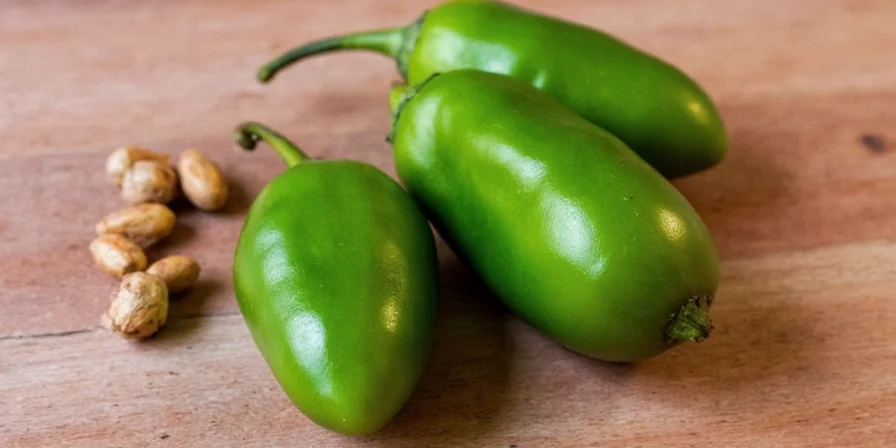Need guajillo chile substitutes right now? Use ancho peppers as a 1:1 replacement for most recipes, or blend pasilla negro with a touch of New Mexico chile for authentic flavor. Skip chipotle unless you want smokiness—it's not a direct substitute. Here's exactly when and how to use each alternative based on what you have available.
Top 3 Practical Guajillo Chile Substitutes (Quick Reference)
| Best Substitute | When to Use | Ratio | Adjustments Needed |
|---|---|---|---|
| Ancho peppers | 90% of recipes including sauces and stews | 1:1 by weight | Add 1/4 tsp lime juice per chile |
| Pasilla negro + New Mexico blend | Authentic Mexican moles and complex sauces | 3:1 ratio | No toasting required |
| Fresh poblanos (charred) | When only fresh peppers available | 1.5:1 fresh-to-dried | Char until 60% blackened |
Why Guajillo Substitutes Fail (And How to Get It Right)
Most guajillo chile substitution guides miss the mark because they focus only on heat level (2,500-5,000 SHU), ignoring guajillo's critical functional roles in recipes:
- Tannins that bind with proteins in braised meats
- Specific pH (5.0) that stabilizes tomato-based sauces
- Dried fruit notes from enzymatic compounds
When your recipe calls for guajillo chiles but you're missing them, these five substitutes work because they address these functional requirements—not just flavor.

1. Ancho Chile Peppers – Best All-Around Replacement
Use when: Making adobos, red sauces, or stews where authenticity matters most
Why it works: Anchovies share guajillo's tannin profile (though milder at 1,000-1,500 SHU) and develop similar Maillard reaction browning.
Pro tip: Rehydrate in 175°F water for 15 minutes (30% longer than guajillos due to thicker flesh), then add 1/4 tsp lime juice per chile to balance pH. This prevents the "flat" flavor common in failed substitutions.

Best for:
- Oaxacan mole negro (use 1:1 ratio by weight)
- Everyday red sauces where complexity matters
2. Pasilla Negro Chiles – For Authentic Regional Dishes
Use when: Making traditional Mexican recipes from Michoacán or Oaxaca
Why it works: Pasilla negros have identical capsaicinoid profiles to guajillos but higher vanillin concentration, providing fruitiness with added complexity.
Pro tip: Blend 3 parts pasilla negro with 1 part New Mexico chile by volume. Never toast pasilla negros—their thin skin burns at 325°F, releasing bitter compounds.

Best for:
- Pipián sauces requiring stable emulsions
- Dishes needing 8+ hour simmering without flavor degradation
3. Fresh Poblanos – When You Only Have Fresh Peppers
Use when: Guajillos unavailable and you need quick solution
Why it works: Fresh poblanos contain chlorophyll compounds that prevent oxidation. When charred properly, they mimic guajillo's roasted notes.
Pro tip: Broil until 60% blackened (remove seeds first to prevent bitterness), then submerge in water for 10 minutes. Use 1.5 fresh poblanos per dried guajillo.

Best for:
- Weeknight meals where authenticity is secondary
- When only fresh peppers available at grocery store
4. New Mexico Chiles – For Tomato-Based Dishes
Use when: Making enchilada sauce or other tomato-based recipes
Why it works: New Mexico chiles contain higher citric acid (0.8% vs guajillo's 0.3%), making them ideal for balancing tomato acidity.
Pro tip: Reduce liquid by 15% in your recipe—their denser flesh absorbs more moisture during rehydration. Perfect for stabilizing dairy components.

Best for:
- New Mexican red chile stew
- Dishes with dairy components needing pH stabilization
5. Chipotle Powder – Only When You Want Smokiness
Use when: You specifically want smoky flavor (not as direct substitute)
Why it works: Chipotle's smoke-cured process creates compounds that accelerate browning reactions—but it's not a true guajillo replacement.
Pro tip: Use at 30% concentration of guajillo weight (1/3 teaspoon per chile). Bloom in oil at 275°F for 90 seconds—exceeding this causes bitter flavors.

Best for:
- Adding smokiness to otherwise authentic recipes
- Recipes requiring rapid flavor development under 2 hours
Substitution Cheat Sheet
| Chile | Best For | Key Adjustment | When to Avoid |
|---|---|---|---|
| Ancho | 90% of recipes | + lime juice | When extreme heat needed |
| Pasilla Negro blend | Authentic moles | No toasting | Quick weeknight meals |
| Fresh Poblanos | Emergency substitution | Char 60% blackened | Traditional red sauces |
| New Mexico | Tomato-based dishes | -15% liquid | Non-tomato applications |
| Chipotle Powder | Adding smokiness | Use sparingly | Authentic non-smoky dishes |
3 Critical Mistakes That Ruin Substitutions
- Using bell peppers: They lack tannins essential for sauce emulsification and dilute flavors with high water content (92% vs guajillo's 8%).
- Not adjusting pH: Guajillo's natural pH is 5.0—use pH strips to target 4.8-5.2 range for proper sauce consistency.
- Over-toasting substitutes: Many dried chiles burn at temperatures that guajillos can handle, releasing bitter compounds.
FAQ: Practical Substitution Answers
What's the easiest guajillo substitute for weeknight cooking?
Ancho peppers are your best option. Use them 1:1 by weight with a splash of lime juice. They're widely available, rehydrate quickly, and deliver the closest flavor profile without special techniques.
Can I use regular chili powder instead of guajillo?
Not recommended. Most chili powders contain cumin and garlic that alter flavor profiles. For authentic results, use whole dried chiles—anchos are your safest bet when guajillos are unavailable.
How do I know if my substitution worked?
Check sauce thickness by coating the back of a spoon—proper viscosity forms a thin film that doesn't immediately run off. Also, the color should be deep brick red (Pantone 18-1548 TCX) without orange or brown tones.
Can I freeze dried chiles for later use?
Yes, but thaw at room temperature for 2 hours before use. Freezing causes micro-fractures in cell walls—rushing the thawing process leads to moisture absorption that dilutes flavor compounds.
What's the worst substitute for guajillo chiles?
Cayenne pepper. It provides heat but lacks guajillo's fruitiness and tannins, resulting in one-dimensional, overly spicy sauces that don't emulsify properly. Stick with anchos or pasilla negros for authentic results.
Final Recommendation
Keep dried ancho peppers in your pantry at all times—they're the most versatile guajillo substitute that works in nearly every recipe. When you're in a pinch, use 1:1 by weight with a splash of lime juice to balance pH. For truly authentic Mexican cooking, stock pasilla negros and blend them with New Mexico chiles in a 3:1 ratio.

Mastering guajillo chile substitutions means understanding what makes them unique in your recipe—not just swapping based on heat level. With these practical, tested alternatives, you'll never have to abandon a recipe when guajillos are unavailable.











 浙公网安备
33010002000092号
浙公网安备
33010002000092号 浙B2-20120091-4
浙B2-20120091-4